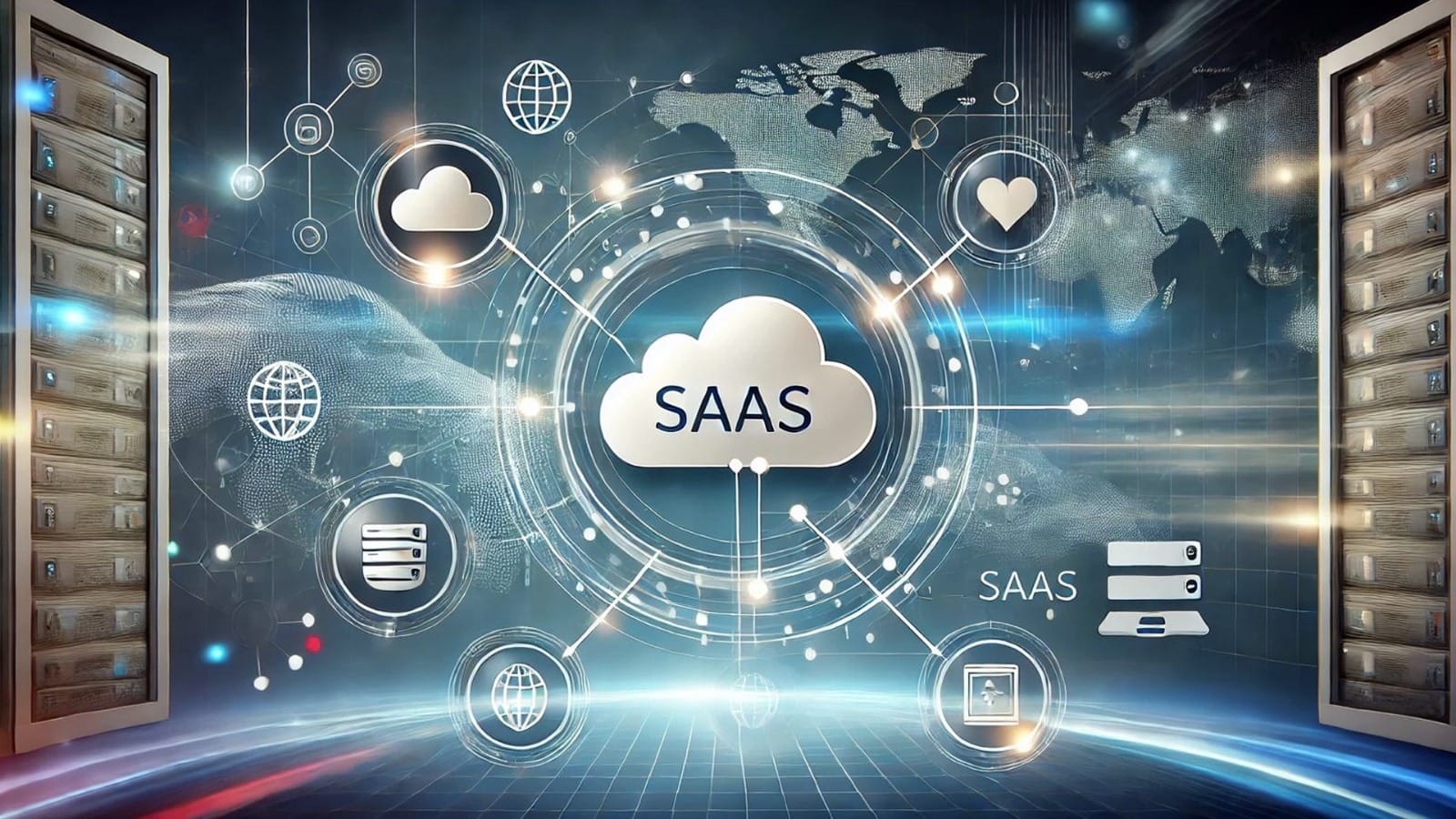SaaS - The SaaS world is ending?
Rumors have circulated about the decline of SaaS, but the reality is much more promising. SaaS (Software as a Service) is far from ending—it’s evolving.

SaaS is a cloud-based software distribution model where software is hosted by a provider and accessed by users over the internet. Instead of installing software on individual computers, users simply log in via a web browser.
Rumors have circulated about the decline of SaaS, but the reality is much more promising. SaaS (Software as a Service) is far from ending—it’s evolving. Predictions indicate that global SaaS spending will hit $679 billion by 2024, signaling its critical role in modern business. From healthcare to finance, industries leverage SaaS for its flexibility, scalability, and cost-effectiveness, enabling companies to remain agile and competitive in a fast-changing digital landscape.
Why SaaS is Still Thriving
Cost Efficiency: One of the biggest advantages of SaaS is the elimination of hefty upfront costs for hardware and infrastructure. Businesses can simply subscribe to the service, paying for what they need on a regular basis, which reduces the need for large capital expenditures. This also allows businesses to reallocate resources to other areas, such as innovation or customer experience.
Automatic Updates: Traditional software requires frequent manual updates, which can lead to system downtime and lost productivity. SaaS automatically updates software and pushes new features regularly, so companies are always using the most current technology. This not only saves time but also ensures businesses are always working with the latest features and security measures.
Accessibility: SaaS platforms are accessible from anywhere with an internet connection. This flexibility supports remote work and ensures that teams can collaborate in real-time, regardless of location. For global companies, this accessibility is essential for maintaining operations across multiple time zones and regions.
Scalability: Whether you’re a startup or an enterprise, SaaS solutions are inherently scalable. As your business grows, you can seamlessly increase your SaaS usage without worrying about overhauling infrastructure. SaaS providers offer flexible pricing plans, making it easy to scale up (or down) based on real-time needs, ensuring businesses only pay for what they use.
Security: With increasing concerns about cyber threats, SaaS providers have ramped up their security protocols. Offering multi-factor authentication (MFA), encryption, and compliance with global standards like GDPR, SaaS solutions are designed to protect sensitive data. Many SaaS platforms also have built-in disaster recovery systems to safeguard against unexpected events.
Collaboration & Integration: In a SaaS ecosystem, platforms integrate seamlessly with other tools, allowing data to flow smoothly between systems. This interoperability ensures that businesses can use multiple SaaS solutions in tandem to create efficient workflows. APIs (Application Programming Interfaces) make it easy to connect various platforms, ensuring operations are streamlined.
Key Trends Driving SaaS Forward
AI and Machine Learning: The integration of AI into SaaS platforms is a game-changer. AI automates repetitive tasks, provides predictive insights, and personalizes the user experience. For example, AI-driven SaaS applications help businesses analyze customer behavior, improve decision-making, and enhance operational efficiency.
Usage-Based Pricing Models: The shift from traditional subscription models to usage-based pricing is gaining momentum. Companies only pay for what they use, which is ideal for businesses with fluctuating needs. This flexible pricing structure makes SaaS more affordable and scalable for organizations of any size.
Vertical SaaS Solutions: Another significant trend is the rise of Vertical SaaS, where solutions are customized to meet the needs of specific industries. Whether it’s healthcare, real estate, or education, SaaS is becoming increasingly specialized, providing features that are fine-tuned to each sector’s unique requirements. This approach delivers greater value to businesses and makes SaaS more versatile.
Interoperability & API Integration: As companies adopt multiple SaaS solutions, there is a growing need for these platforms to work together seamlessly. SaaS providers are focusing on building ecosystems that promote interoperability, allowing different software systems to share data and function in unison. Open APIs are a critical component, ensuring that companies can create custom workflows and streamline operations.
Myth-Busting: SaaS Resilience
Despite its success, some myths persist. Many believe that SaaS is less secure than on-premise software, but this is not the case. SaaS providers frequently update their platforms with cutting-edge security measures, offering end-to-end encryption, advanced access controls, and compliance with stringent regulations. SaaS security standards have consistently proven to be more reliable than many traditional systems.
Another myth is that SaaS is becoming obsolete due to market saturation. However, SaaS continues to grow and adapt, with the introduction of micro-SaaS solutions and vertical platforms that cater to niche markets. Far from fading, SaaS is expanding its reach, offering specialized tools that meet the evolving needs of various industries.
Dispelling Myths: The Resilience of SaaS
Despite the ongoing success and innovation in the SaaS industry, there are several myths that persist, particularly the notion that SaaS is less robust or secure than on-premise solutions. However, industry experts have consistently dispelled these misconceptions. SaaS has proven itself to be more flexible, scalable, and secure, especially as providers implement stringent security measures and continually update their platforms to meet the evolving needs of businesses.
Another myth is that SaaS is becoming obsolete due to market saturation. In reality, the SaaS model is more relevant than ever as it expands into new industries and offers increasingly customizable solutions. SaaS is not a one-size-fits-all approach, and its adaptability is precisely what keeps it at the forefront of enterprise solutions.
In conclusion, the SaaS world is far from ending; rather, it is entering a new phase of growth and transformation. With advancements in AI, machine learning, and cybersecurity, along with shifts towards usage-based pricing and vertical solutions, SaaS continues to redefine how businesses operate. The flexibility and adaptability of SaaS make it indispensable in today’s fast-paced, digital-first world.
As the SaaS industry evolves, those who embrace these changes will thrive, staying ahead of the curve and reaping the benefits of this dynamic and innovative model. SaaS is not dying—it’s simply adapting to the needs of a rapidly changing market, ensuring its place at the heart of enterprise technology for years to come.
Thanks for reading. If you enjoyed our content you can stay up to date by following us on Twitter, Facebook and LinkedIn 👋.


